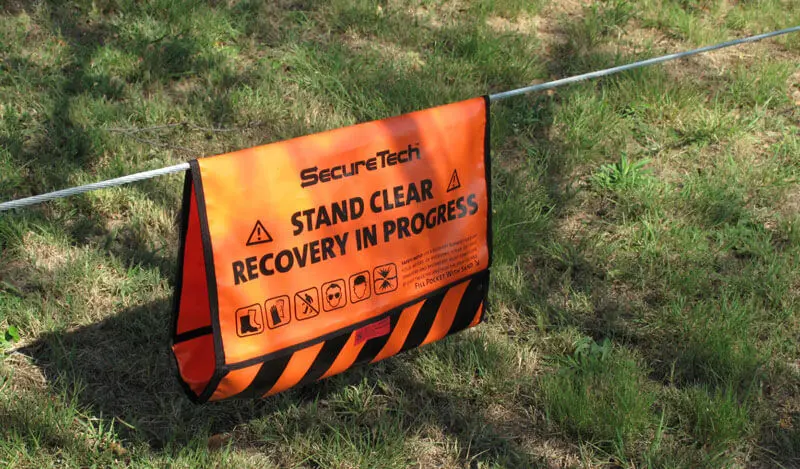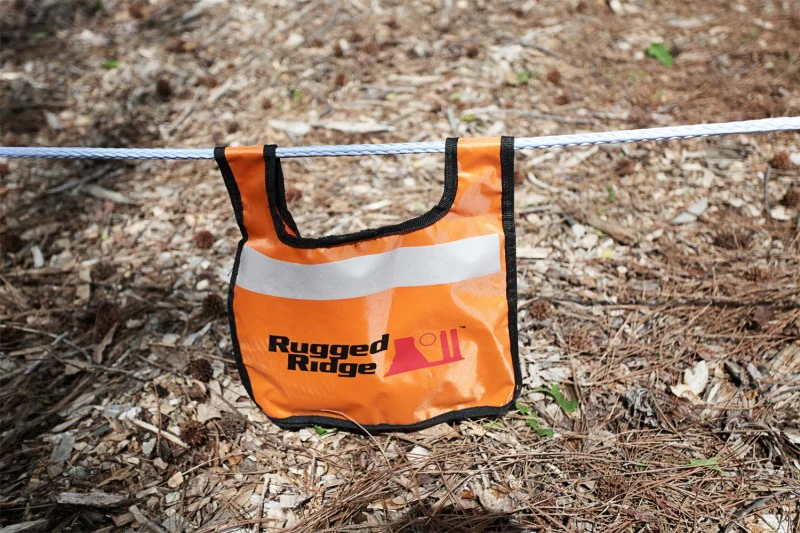When it comes to off-road adventures or vehicle recovery, safety should always be a top priority.
You might not think much about it until you’re in a tricky recovery situation, but trust me, a winch damper can make all the difference.
Let’s dive deep into what a winch damper is, how it works, and why it’s an essential tool for any recovery kit.
What is Winch Damper?

A winch damper is one of those tools that many people don’t realize they need—until they need it. Essentially, it’s a weighted piece of fabric that you place over your winch cable or rope during a recovery operation.
Why? Because winching is a high-tension process.
If the winch cable or rope snaps (and yes, it happens more often than you think), that tension is released in a dangerous recoil that can whip the cable back with incredible force. The best winch damper helps to slow down that recoil, reducing the chances of injury or damage.
Safety in off-road recovery should never be an afterthought. Using a winch damper is one simple step that can drastically reduce risks during winching operations.
Why is a Winch Damper Important?

Imagine you’re stuck deep in mud, and you’ve hooked up your winch to pull yourself out. If that cable were to break under tension, the force of the snapback could be catastrophic.
A winch damper’s job is to absorb some of that energy and bring the cable down instead of allowing it to fly wildly. This helps protect not only you but also bystanders and your vehicle.
Many regions, especially in professional off-roading or competitions, even require the use of a winch damper by law. The safety implications are so significant that it’s considered a mandatory safety tool in many situations.
Whether you’re using steel cable or synthetic rope, a winch damper adds an extra layer of protection that you can’t afford to ignore.
Types of Winch Dampers
When it comes to winch dampers, they’re not one-size-fits-all. Depending on the recovery situation you find yourself in, you might need a different type of damper.
The two primary types that you’ll commonly encounter are fabric-based dampers and weighted dampers. Both serve the same basic purpose—slowing down and grounding a winch cable in case it snaps—but they do so in slightly different ways, and each has its own strengths.
1. Fabric-Based Dampers
Fabric-based dampers are the most widely used type. They are usually made from tough, durable materials like canvas, nylon, or vinyl, which are designed to withstand the harsh conditions of off-roading or heavy recovery operations.
These materials are weather-resistant, meaning they can handle rain, mud, snow, and extreme heat without breaking down easily.
One of the key features of fabric-based dampers is that they often have internal pockets. These pockets allow you to add weight to the damper, making it versatile for different situations.
You can fill these pockets with items you already have on hand, such as sandbags, small rocks, or even your recovery tools.
This gives you the flexibility to adjust the weight of the damper depending on the level of tension in your winch cable. For instance, if you’re working with a lightweight synthetic rope, you might not need as much weight.
On the other hand, if you’re using a heavy steel cable under high tension, you can add more weight to the damper for better safety.
Because they are lightweight and portable without added weight, fabric-based dampers are easy to carry and store, making them a popular choice for casual off-roaders.
Their customizable weight and durability make them an excellent all-purpose solution for a variety of recovery scenarios.
2. Weighted Dampers
On the other hand, weighted dampers come pre-loaded with internal weights. Unlike fabric-based dampers, which allow you to adjust the weight manually, weighted dampers are designed for more heavy-duty recovery operations where you need a lot of force to be controlled quickly.
These dampers tend to be bulkier and heavier right out of the box, making them ideal for situations where larger vehicles or equipment are involved, or where steel cables under extreme tension are being used.
The added weight in these dampers provides more immediate drag on the winch cable in case of a snap, which means the cable will lose speed faster and be pulled to the ground more quickly.
This can be crucial in more intense recovery operations, where every second counts in preventing dangerous recoil.
Because they are thicker and bulkier, weighted dampers are better suited for professionals or people who regularly perform vehicle recovery, such as off-roaders dealing with larger trucks or specialized recovery teams.
They are not as flexible or portable as fabric-based dampers, but the extra weight and the immediate impact they provide make them indispensable for high-tension winching situations.
FAQs
Can I use a homemade winch damper?
While it’s possible to make your own winch damper by draping a heavy blanket or jacket over the cable, professionally designed dampers are made specifically for this purpose and provide much better protection.
Is a winch damper necessary with synthetic ropes?
Yes! Even though synthetic ropes are less likely to snap with the same force as steel cables, they can still recoil if they break. A winch damper is always a good idea, regardless of the material.
How heavy should a winch damper be?
The weight of your winch damper should be sufficient to slow down a recoiling cable. Most dampers come pre-weighted or have pockets for adding weight, giving you flexibility depending on the situation.
Conclusion
In the world of off-roading and vehicle recovery, the winch damper is an unsung hero. While you may not use it often, it’s one of those tools that can save lives when things go wrong.
Whether you’re an off-road enthusiast or someone who just likes to be prepared for anything, a winch damper should be a staple in your recovery kit.
The next time you’re gearing up for an adventure, make sure your winch damper is packed and ready to go—you’ll be glad you did!

